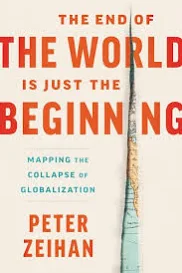U.S. stocks can provide Canadian investors with all the foreign exposure they need
 I’ve been advising Canadian investors to include U.S. stocks in their portfolios for more than 30 years. I continue to recommend them today. The U.S. stock market offers the widest variety and highest investment grade of companies to invest in of any country in the world. It also offers a wider selection of growth opportunities for those companies to pursue, in North America and around the world.
I’ve been advising Canadian investors to include U.S. stocks in their portfolios for more than 30 years. I continue to recommend them today. The U.S. stock market offers the widest variety and highest investment grade of companies to invest in of any country in the world. It also offers a wider selection of growth opportunities for those companies to pursue, in North America and around the world.
For our portfolio management clients, our general preference is to invest one quarter to one third of their holdings in U.S. stocks and the remainder in Canadian stocks.
Many major financial institutions recommend investing in North America. Some also recommend investing outside North America, especially in developing nations. They say that countries outside North America also offer great opportunities, and they may be right in some cases. They note that foreign investing offers an additional chance for diversification. This may be true, but we see it as irrelevant. Our view is that North America offers all the diversification that you really need.
Many promoters of emerging-market investing are also motivated at least in part by a conflict of interest.
By offering imported investments in their home market, they can earn higher profit margins than they get with domestic investments alone. That is, they make more money by promoting foreign investments. Investors may not make any more money, but they undoubtedly face more risk.
We have occasionally offered favourable advice about a handful of high-quality foreign stocks in the past few decades, while mentioning the added risk. But we’ve stressed our view that the U.S. and Canadian markets provide all the investment opportunities that you need to succeed as an investor.
Of course, the Canadian market offers opportunities that beat those available in the U.S.: in bank stocks, in the Resources & Commodities sector, and in specialists like CAE Inc. But Canada has nothing to compare with, say, Alphabet, Microsoft, McDonald’s and any number of other household names.
Neither too hot nor too cold
Some investors say they agree with our view on U.S. stocks in principle, but they disagree with our timing. They think the U.S. dollar is just too high at present levels: too hot, you might say. These folks seem to think that the natural foreign exchange rate between the U.S. and Canadian dollars should be around parity.
As of late 2023, the U.S. dollar has traded at around one-third higher than the Canadian dollar. Way above parity! In fact, the U.S.-Canada exchange rate has not been anywhere near parity in the past decade.
The U.S. dollar has mostly stayed between $1.20 Cdn. and $1.46 Cdn. since the start of 2015. It’s now around the middle of that 8-year range.
Since 1971, the U.S. dollar has stayed between $0.94 Cdn. and $1.60 Cdn. It’s now around the middle of that 52-year range.
Timing is worth a look. But if you make it the deciding factor in your investment decisions, it’s apt to cost you money, in the long run if not in the short.
“Has-been” U.S. dollar has a long life ahead
A lot of foreign governments share the view that the U.S. dollar is overvalued.
In March 2023, in a meeting in New Delhi, the representative from Russia revealed that his country is spearheading the development of a new currency. It is to be used for cross-border trade by the BRICS countries: Brazil, Russia, India, China, and South Africa. (Potential recruits include Iran, Syria and North Korea.)
I put this ambition on a par with the claims of cryptocurrency promoters. Some of them still predict that cryptocurrencies will take the place of the U.S. dollar. Continue Reading…






